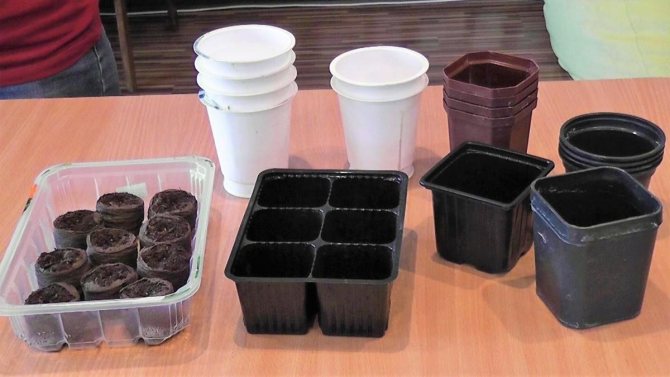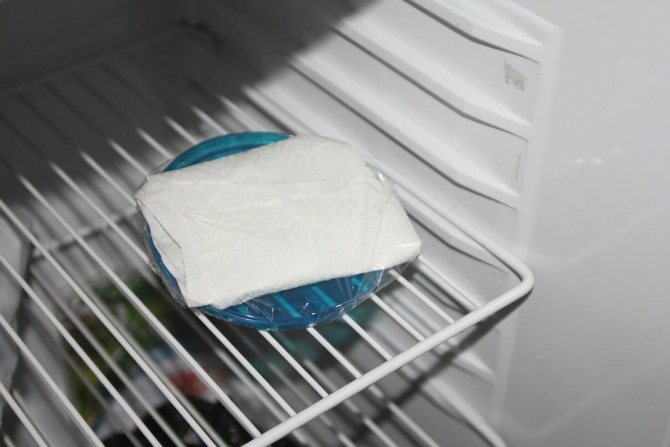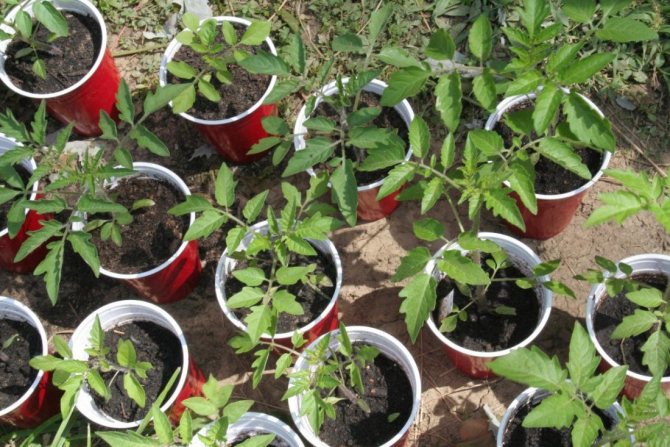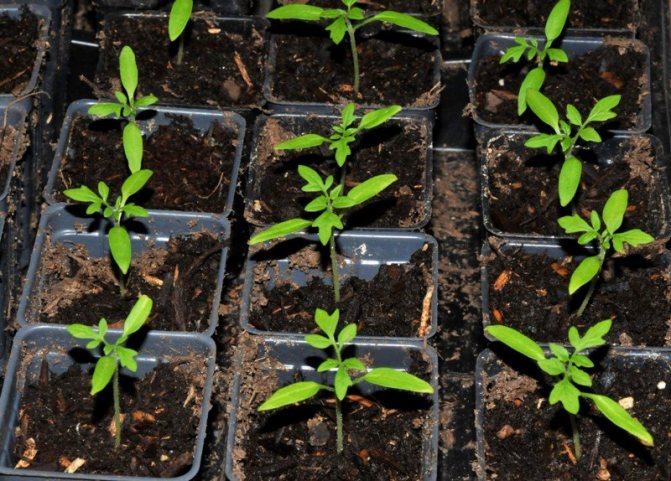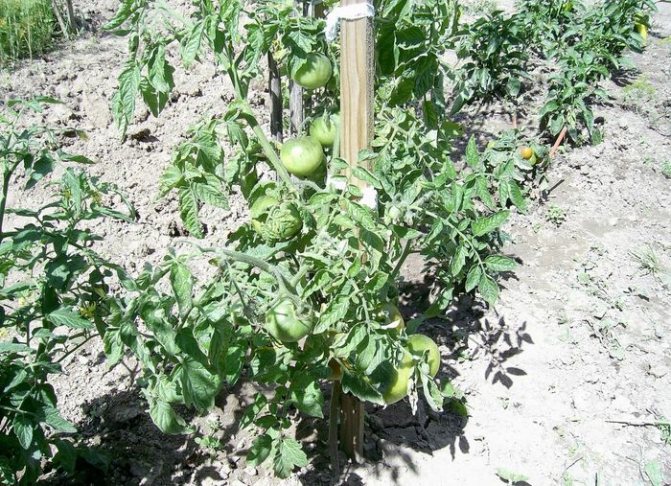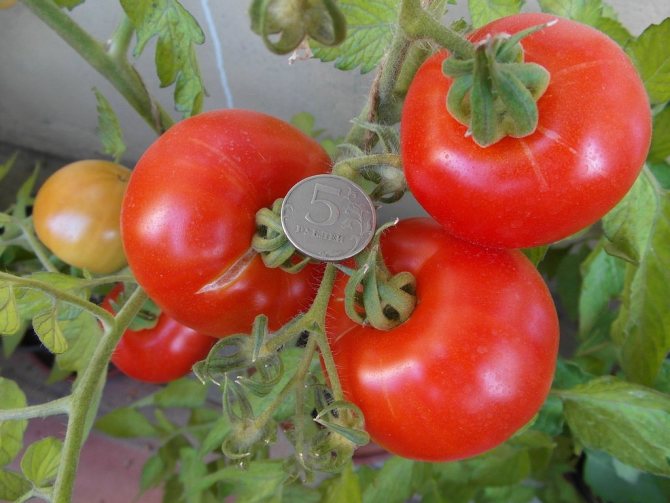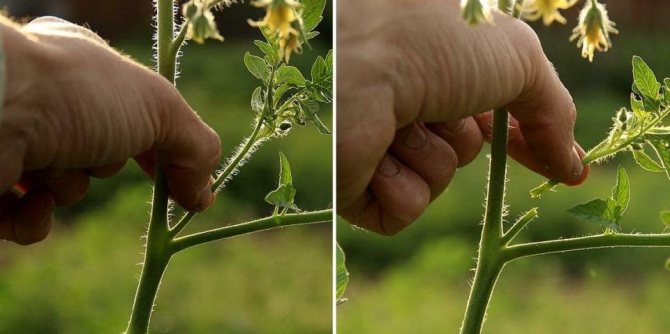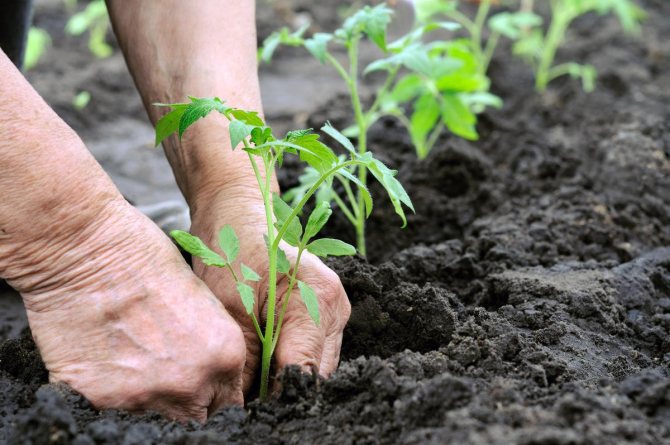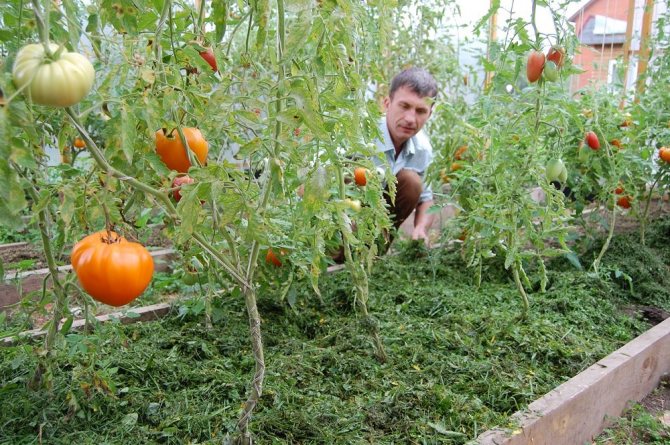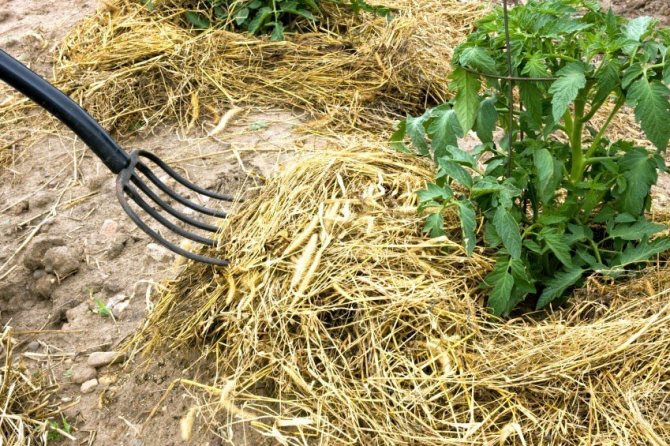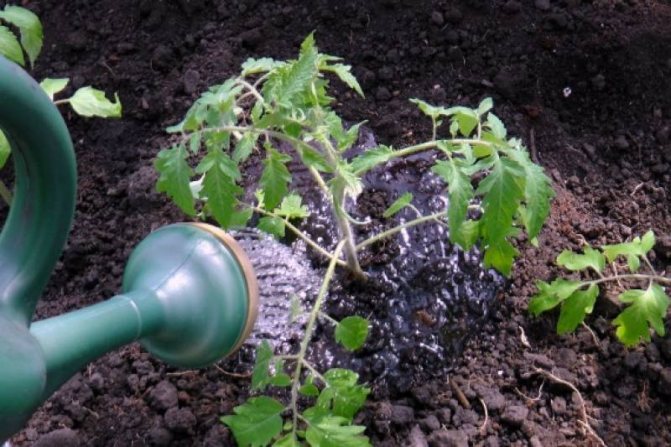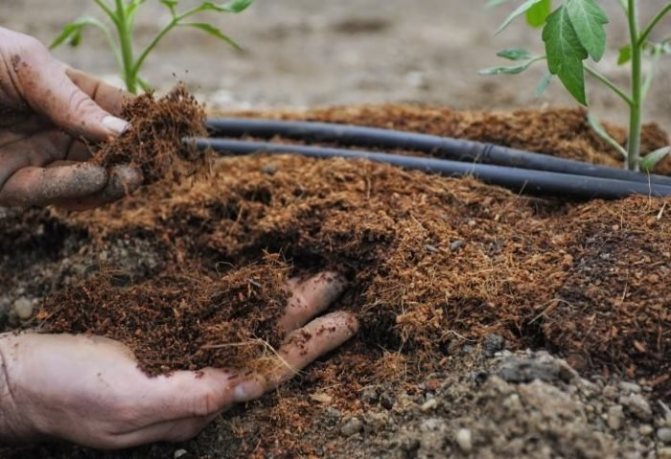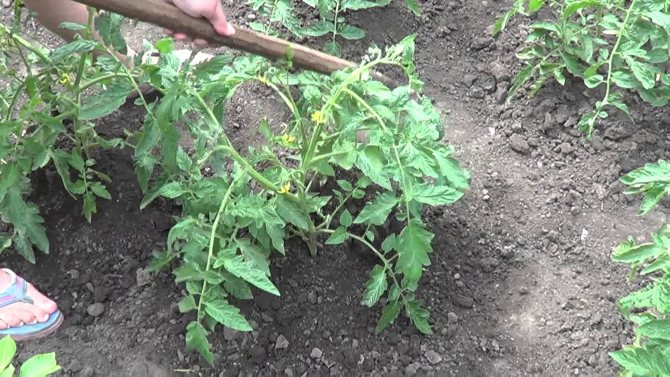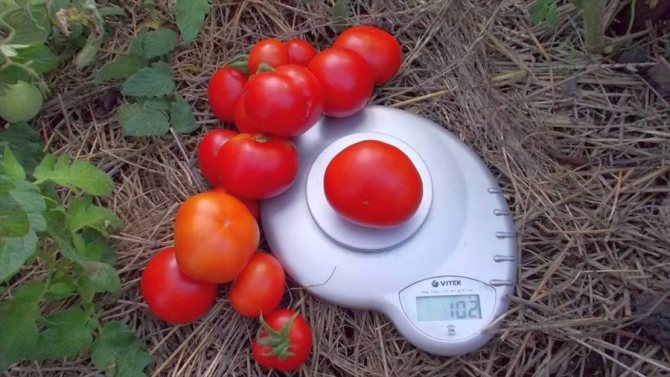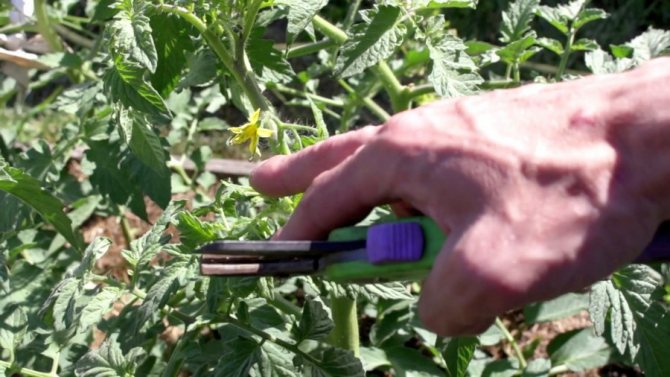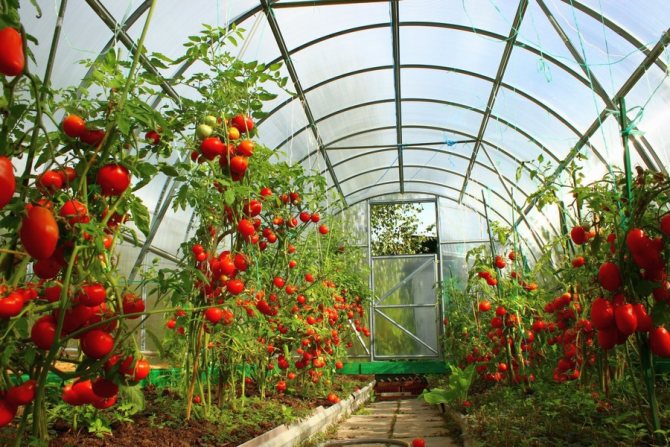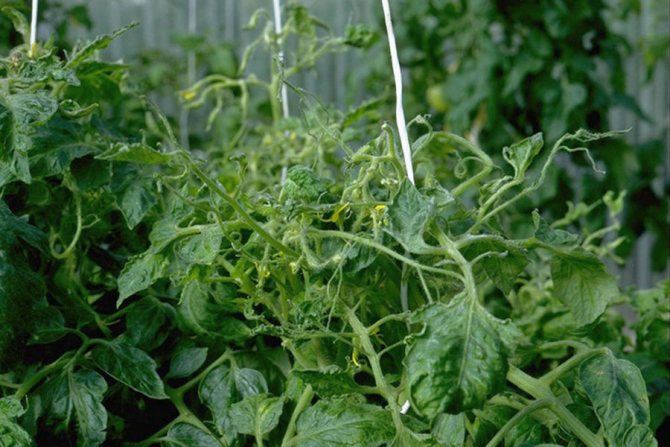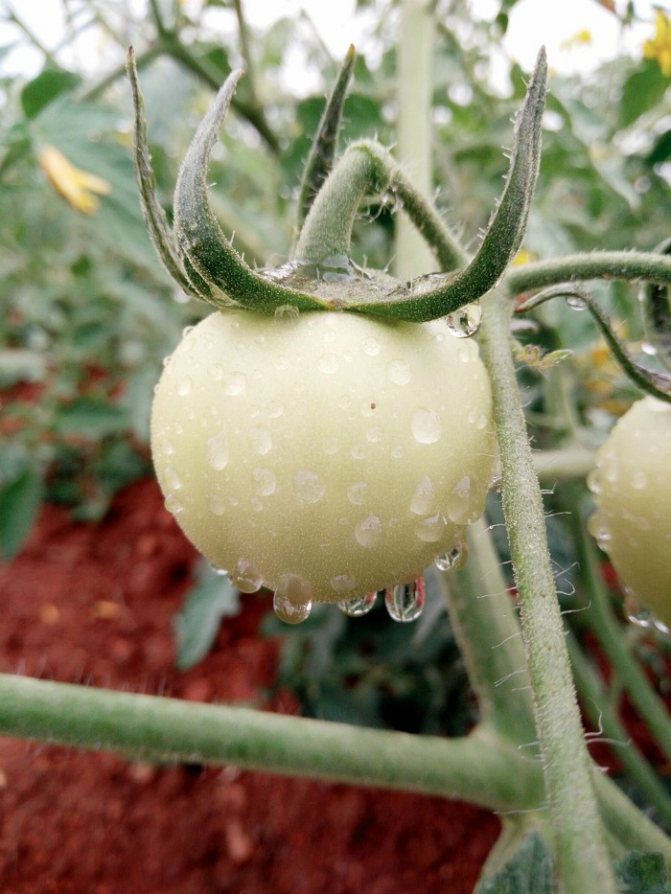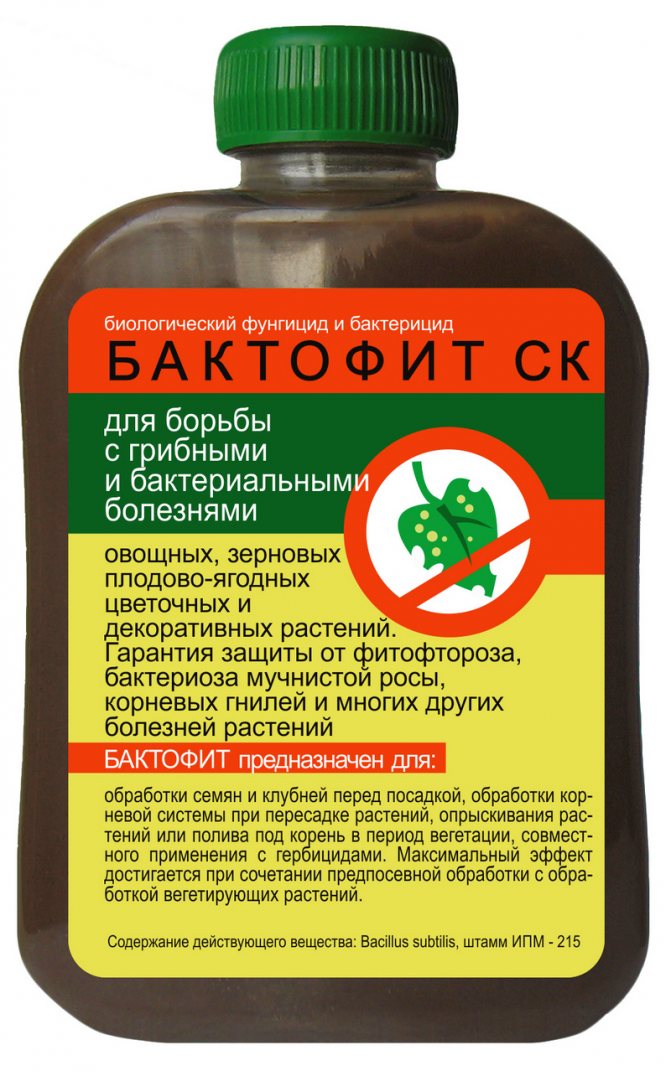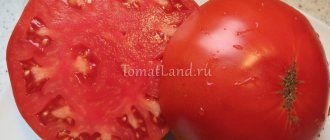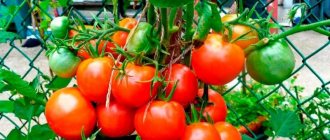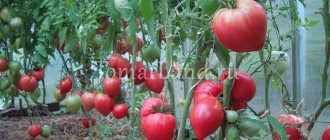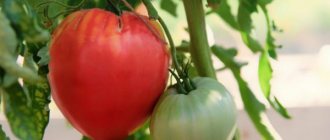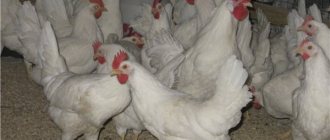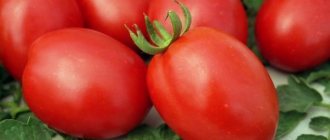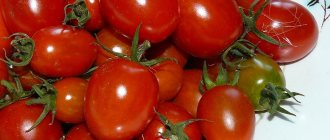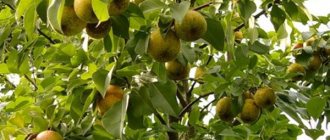Vegetable growing »Tomatoes
0
1042
Article rating
Tomato is the most widespread and favorite vegetable in our country. This plant is happily grown by both novice gardeners and professional farmers. The Siberian early ripening tomato was bred at the end of the 50s of the twentieth century. Despite the past years, this variety has not lost its popularity, since it has a lot of positive qualities. Summer residents love this tomato for its simplicity in growing, a large amount of harvest and resistance to various diseases. The early-ripening Siberian tomato variety grows well in any climatic zone, even under such severe weather conditions that prevail in the northern regions. Another advantage is that you can use this tomato in any way in cooking. Tomatoes make wonderful salads and snacks, delicious ketchups and tomato pastes. By their characteristics, they are ideal for preserving and preparing various pickles.
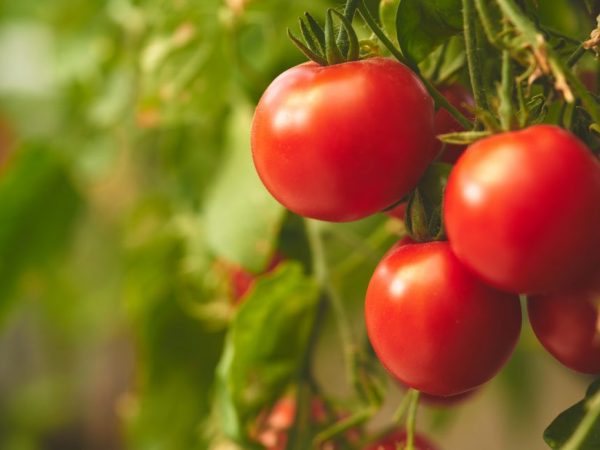
Description of the Siberian early ripening tomato
Characteristics and description of the variety
Early ripe variety Siberian early maturing was bred specifically for cultivation in the open field and under film shelters in regions with short and cool summers. It was registered in the State Register of Selective Achievements in 1959.
Originators: "Federal Scientific Center of Vegetable Growing" and LLC "Agrofirma Aelita".
Regions of admission: North-West, West Siberian, North, Volgo-Vyatka, Ural, Middle Volga, Central, East Siberian, Far East.
Determinant bushes, on the main stem - 3-4 compact inflorescences. Each of them contains 3-5 fruits.
In the photo - the variety Siberian early ripening.
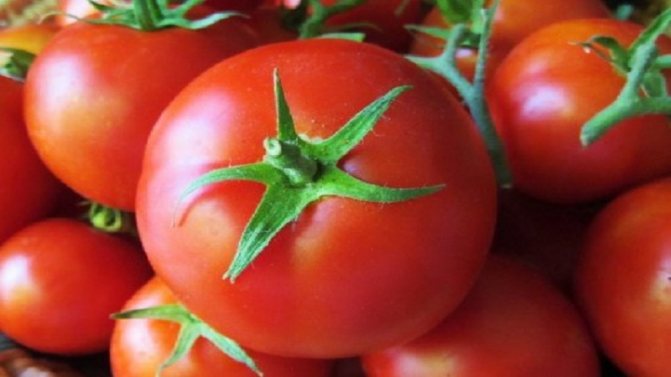

Distinctive features of the variety are presented in the table.
| Indicators | Characteristic |
| Fruit weight | 62-114 g |
| The form | Rounded and flat-round, slightly ribbed |
| Coloration | Unripe tomatoes are green with a dark green spot near the stalk, ripe tomatoes are red |
| Foliage | Weak, medium-sized leaves, green to dark green |
| Inflorescence | Simple, less often intermediate. The first inflorescence is formed above 6-8 leaves, the subsequent ones - after 1-2 leaves |
| Pulp | Dense, juicy, with few seeds. Contains 4-6% dry matter, 2.5-3.5% sugar |
| Taste | Pleasant, sweet and sour |
| Skin | Thin but dense, does not crack |
| Number of nests | 4 and more |
| Peduncle | Articulated |
| Bushes height | Outdoors - 40-50 cm, indoor - 60-90 cm |
| Appointment | Tomatoes are recommended for fresh consumption and canning |
| Ripening period | 98-108 days after germination |
| Yield | 6-10 kg / m² in greenhouses, up to 7 kg / m² in vegetable gardens and greenhouses |
| Sustainability | To tobacco mosaic virus, cladosporiosis, slightly susceptible to late blight |
| Transportability | Excellent |
Caring for tomatoes after transplanting
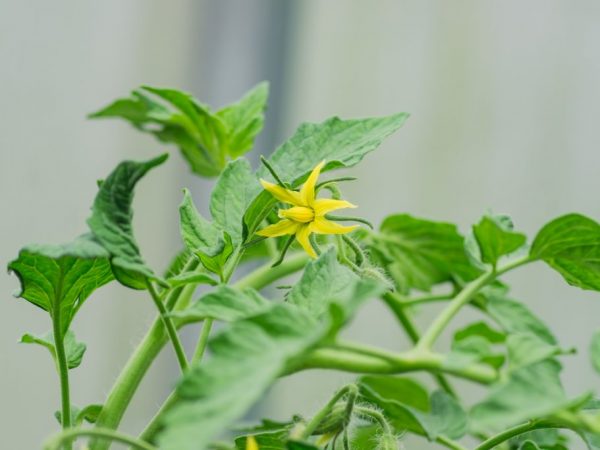

Proper care will help keep your plants healthy
Thanks to proper crop care, you can achieve the highest possible yield of fruits. Plants will have good immunity, less risk of diseases typical of tomatoes.
Watering
It is recommended to water tomatoes regularly and in moderation (1-2 times a week, 1 liter for each bush). It is better to do this in the evening or morning, when there is no solar activity. Water for this purpose must be used warm and settled.
Periodically, you can add a small amount of potassium permanganate (potassium permanganate) to it. This is done as a preventive measure against diseases.
It is important to remember that watering should be moderate: an excess of moisture in the soil can provoke the occurrence of putrefactive diseases.
Top dressing and loosening
For the entire growing season, it is recommended to carry out 3-4 feeding of tomatoes. It is advisable to use fertilizer in liquid form for this: this will allow them to enter the soil evenly. As a top dressing, complex additives, mullein infusion, nitrophoska are used.
Regular loosening of the soil will not only get rid of weeds, but will also help keep moisture in the ground for a longer time. Due to the "fluffing" of the soil, oxygen access to the plant root system increases.
():
Loosening of the soil destroys the subsoil capillaries, through which moisture from the lower layers was pulled to the surface and evaporated from the soil. In addition, after loosening, an “earthen mulch” is created on the surface, which also protects the roots from overheating.
Grasshopping and bush formation
The Siberian early ripening variety belongs to undersized, but its strong foliage suggests pinching. To do this, they regularly cut off excess foliage and additional stepchildren. They do not create ovaries, they only draw useful substances from the culture.
For greenhouse cultivation, it is recommended to tie up tomato bushes to vertical supports. This will save space and make it easier to care for your crop.
It is better to form a tomato bush in no more than 3 stems. This will allow the plant to produce the maximum number of medium-sized fruits. The description of the variety indicates that there should be no more than 8 flower clusters on an adult bush.
Disease and pest control
A characteristic feature of the Siberian precocious variety is its increased resistance to diseases such as tobacco mosaic and brown spot. The plant is often exposed to root rot and late blight.
The occurrence of these diseases often occurs due to improper care of the vegetable (excess moisture in the soil, ignoring preventive treatments of the crop).
To prevent diseases, it is recommended to spray tomatoes with special fungicidal and triazole preparations ("Bravo", "Ditan", "HOM"). Use them according to the instructions.
From improvised means, they use solutions of potassium permanganate, hydrogen peroxide. They regularly cultivate the outer parts of the crop and the soil under it.
If a diseased plant is identified on the site, it is recommended to immediately get rid of it by removing it from the garden and destroying it away from it. It is better to immediately subject the rest of the specimens to preventive treatment (spraying and watering the soil) with special means intended for this.
Among the pests of tomatoes, wireworm, bear, aphid, nematode, etc. stand out. They are fought with insecticides. Traditional methods in this case are ineffective.
How to grow seedlings
The mid-season Siberian tomato is grown by the seedling method... Sowing is performed in late March or early April, 60-65 days before transfer to the ground.
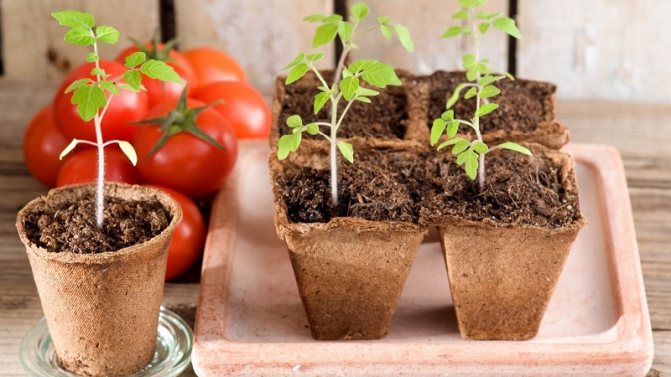

Seed preparation
Connoisseurs of the variety describe the frequent cases of misgrading. or replacing seeds, so they try to collect material on their own from previously grown tomatoes. You can buy quality seeds from the well-known Aelita, Fazenda.
Before sowing, the following manipulations are performed with seeds:
- Calibrate to identify empty seeds. To do this, the seeds are soaked for 10 minutes in a saline solution (1 teaspoon per 200 ml). Those that float to the surface are thrown away, those remaining at the bottom are washed with warm running water.
- If the seed was stored in the refrigerator, perform the warming up procedure one and a half months before sowing. The seeds are put in a linen bag and placed on a heating radiator for 6-7 days.
- The seeds are disinfected in 1% potassium permanganate solution (30 minutes) or in 2% hydrogen peroxide solution (15 minutes).
- Soak in growth stimulants - "Radifarm", "Epin", "Immunocytofit", "Heteroauxin", "Biostim" - and dry.
- Pre-germinate in gauze folded in several layers. The procedure promotes early emergence of seedlings, increases the percentage of germination. The fabric must be damp, but no excess water is allowed.
- They are hardened to increase the protective forces of the future plant. Sprouted seeds are placed on the lower shelf of the refrigerator overnight, and taken out in the morning. The procedure is carried out 3-4 days in a row.
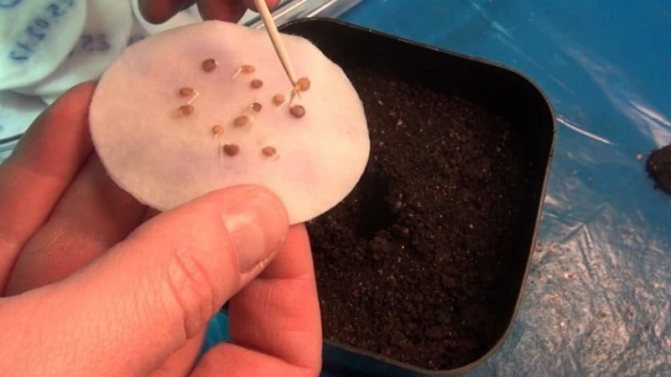

Capacity and soil
Suitable for growing seedlings ordinary plastic containers, trays, boxes and cassettes, tetrapacks 5-7 cm high.
Seedling soil bought in a specialized store or prepared independently from turf, river sand and humus mixed in equal proportions. The soil is disinfected by heating in an oven, a double boiler, a microwave oven, or a strong solution of potassium permanganate, "Fitosporin", is used.
About other varieties of tomatoes:
High-yielding, tasty and easy-care Stresa tomatoes
What harvest can you expect from "Early Girl" tomatoes
Sowing
Containers for growing seedlings are filled with moist soil and the seeds are embedded in furrows 1 cm deep. Sprinkle on top with a layer of peat and stretch polyethylene for a greenhouse effect. The container is placed in a warm place inaccessible to direct sunlight. Seeds without prior germination at an air temperature of 25 ° C hatch after 4-5 days. The germination period of germinated grains is halved.
Seedling care
After the first shoots appear the film is removed, and the containers are taken out onto the windowsill on the south side of the house. The optimal daylight hours are 16 hours. With a lack of lighting, the seedlings are supplemented with fluorescent lamps.
At the stage of 2-3 true leaves, the seedlings dive into separate containers with a volume of 300 ml.
Seedling watering - moderate, after the topsoil dries out. A week before transferring to a permanent place, watering is stopped, the seedlings are taken out into fresh air for hardening for 30-60 minutes.
For feeding use ready-made mineral complexes: Agricola, Effekton, Universal. The frequency of feeding is 2 times until the moment of transplanting into the ground.
Possible problems
It will not be difficult to grow Siberian tomatoes, but if you do not follow the rules of care, then problems will arise that lead to loss of crops.
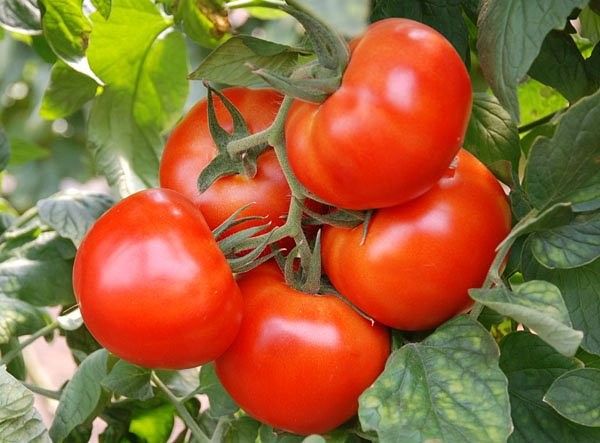

Water as needed. The scheme usually includes one watering every 5-6 days. If the moisture in the soil increases, then rotting and fungal disease appear. If the problem has already appeared, wood ash can come to the rescue, which is simply sprinkled with soil or a liquid solution is made.
Planting seeds early increases the risk of pulling out the seedlings. Then the number of fruits decreases, and the susceptibility to pathogens increases. For seedlings, it is necessary to provide the necessary level of humidity and air temperature, there must be a sufficient supply of light.
The bushes of the variety are small, but sometimes they can break due to the placement of large fruits on the branches. Therefore, you need to take care in time and install the support.
Agrotechnical techniques
Rules for cultivating tomatoes in open and closed ground - standard... It involves moderate watering, loosening, weeding, mulching of the soil, forming the cores into 3 stems, followed by a garter, feeding with organic matter and minerals.
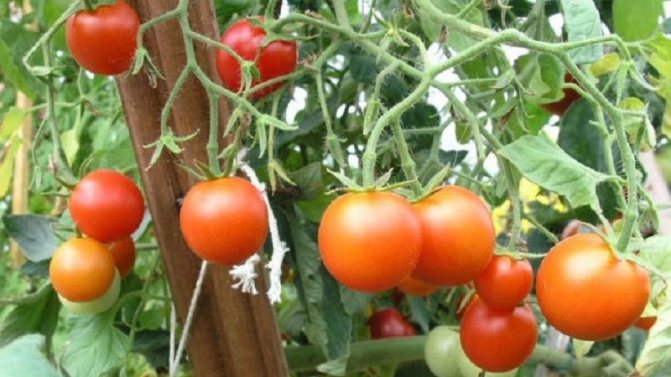

Landing
The transfer of seedlings to the ground begins in late May or early June... In autumn, the earth is dug up and brought in a bucket of humus per 1 m². In the spring, the soil is loosened, fertilized with chicken droppings (10 liters per 1 m²) and disinfected with copper sulfate (50 g of substance per 1 m²).
Pits 20 cm deep are dug on the site, 1 tbsp is poured into each. l. superphosphate and a handful of ash. Boiling water is poured at an angle of 90 °.
Seedlings are abundantly watered with warm, settled water and planted in the prepared recesses. Planting scheme - 30x50 cm, 3 bushes per 1 m².
Reference. Tomatoes prefer light and nutritious soil with a neutral pH = 7.
Care
Tomato care rules Siberian early ripening:
- moderate watering in the morning or evening, at the root, once every 6 days;
- loosening the land immediately after watering;
- weeding;
- the formation of bushes in 3 stems and a garter to the supports;
- soil mulching with needles, peat, straw, sawdust 2 weeks after planting.
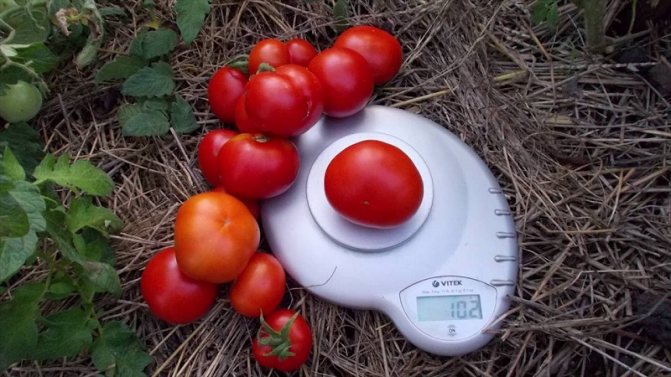

Top dressing scheme:
- The first portion of fertilizers is applied 14 days after planting: 20 g of chicken manure is dissolved in 10 liters of water. Water the bushes at the root.
- For subsequent dressings every 14 days use mineral complexes: "Kemira", "Universal", "Solution", "BioMaster", nitroammofosku, diammofosku - strictly according to the instructions on the package.
For the entire period of growth tomatoes are fertilized 3-4 times.
Features of growing in open and closed ground
There are no particular difficulties in cultivating the variety. The main task of the farmer is to comply with the rules of agricultural technology.
Features of growing Siberian early ripening tomato, planting and care
Sowing the seeds of this variety of tomatoes for seedlings is carried out 55-60 days before the intended planting in the ground. Diving - at the stage of 2 true leaves. When planting seedlings to a permanent place of 1 sq. We recommend placing up to 6 plants per meter of the prepared area. Landing scheme: 70 x 30 - 40 cm.
It is recommended to plant tomatoes in open ground when the threat of recurrent spring frosts has passed. If, after transplanting, low temperatures are still expected, then put arcs over the plantings and cover the plants with agrofibre or film.
Further care for tomatoes consists of timely watering, removing weeds, dressing and preventive measures to protect the crop from diseases and pests.
Harvesting and application of the crop
The first crop when grown in a greenhouse is harvested already at the end of June, in the garden - 2 weeks later.
Tomatoes have a pleasant sweet and sour taste... Some farmers describe it as a classic tomato. The high content of dry matter (up to 6%) allows you to prepare tasty and rich tomato juice, pasta, various sauces. Tomatoes are good fresh and pickled.
Fruits tolerate transportation well provided that it is stacked in wooden boxes in one layer.
Pest and Disease Control Tips
The most reliable information about the characteristics of the Siberian precocious tomato variety is the reviews of gardeners. They argue that the plant rarely gets sick, but you still have to face some problems:
- Late blight. In this case, fungicides or a solution of sodium chloride (10%) will come to the rescue.
- Rot is gray. For the treatment of this disease, fungicides and triazole preparations are selected.
- Alternaria and Fusarium. Treatment with fungicides is shown.
Insecticides are used to control pests. For early ripening tomatoes, the danger is posed by a bear, aphid, whitefly (especially in a greenhouse), wireworm and nematode.
Advantages and disadvantages
Advantages of the variety:
- friendly ripening of fruits;
- early maturity;
- resistance to tobacco mosaic, fusarium wilt and alternaria;
- consistently high yield;
- excellent taste;
- cold resistance;
- unpretentious care.
The disadvantages include "Advanced" age and the absence of a number of new, improved characteristics inherent in modern hybrids and varieties.
Pros and cons
It is not in vain that the Siberian early ripening won the love of gardeners.
- Its main advantages are the following characteristics:
- high productivity;
- fruits practically do not crack;
- ease of care and unpretentiousness to soil properties;
- good transportability;
- the ability to tolerate a short-term drop in temperature;
- long-term fruiting;
- resistance to fungal and viral diseases;
- suitable for growing in any climatic zone;
- versatility of use of fruits (fresh, puree, canning, sauces, juices).
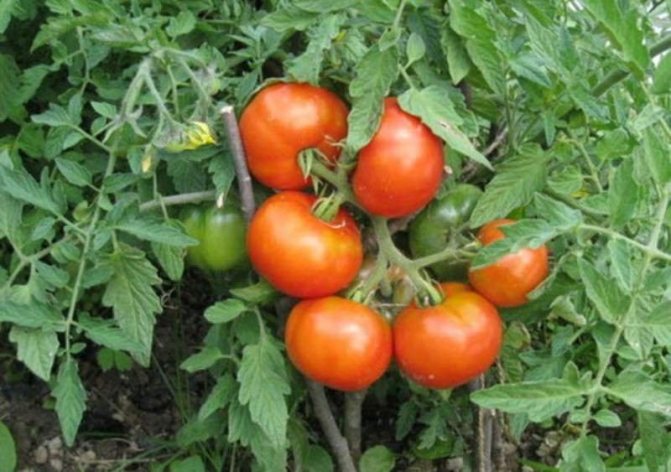

- There are practically no disadvantages of the variety, but some gardeners note the following factors:
- moral obsolescence of the variety;
- inability to compete with modern hybrids.
Testimonials
The opinions of gardeners about the Siberian precocious variety were divided... Some call it an ideal option for regions with a cold climate, others believe that it is high time to forget about it, because many new interesting tomatoes have appeared on the market over the past decades.
Olga, Satka: “I remember how my mother grew this variety 15 years ago, and she still does it. I don't like fresh tomatoes, they are too sour, but it's better not to find them for pickling and salting. Caring for them is simple. It is necessary to moderately moisten the soil and feed it with organics and minerals. "
Evgeniya, Novokuznetsk: “These tomatoes are the best that can be grown in our cold region in the vegetable garden. I have been planting Siberian early maturing for 10 years and am always happy with the result. I collect the seeds myself, dry them and store them in a cool place. Germination is one hundred percent, seedlings take root in any conditions, and the yield is surprisingly high. "
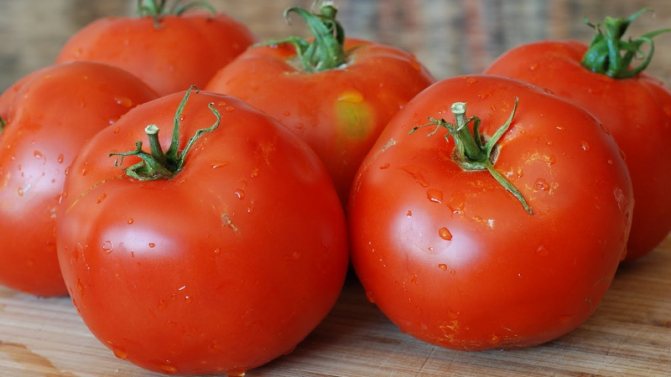

Siberian early ripening tomatoes on video
If you have grown Siberian early ripening tomatoes, write whether you like them or not. What was the yield and taste of the fruit in your climatic conditions? How do you assess the resistance of this variety to diseases and pests? If possible, attach a photo of the entire bush as a whole or individual fruits grown by you to the comment. Thank you!
Your reviews about the Siberian early ripening tomato and additions to the description will help many gardeners evaluate this variety and decide whether to plant it or not.
This is a natural tomato variety. Therefore, we recommend taking seeds from a ripe fruit and using them for planting in the following seasons.
Buy tomato seeds Cornabel
Russia Gardens
Hit of the season 2020! A novelty that has shown a stunning result! High yield! Great fruit taste!

